A story for every season
by missvictrix
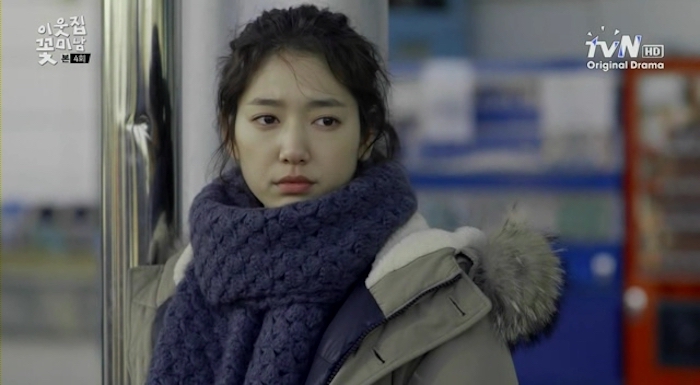
Stories and seasons are often knitted together until we can’t separate one from the other. After all, it wouldn’t be quite The Catcher in the Rye without the Christmas break from boarding school, or Anna Karenina without the bleak Russian winter — and it wouldn’t be Flower Boy Next Door without a cast layered in parkas and scarves, either.
The seasons can become an important part of the stories we tell, but they’re often a visceral part of what we experience as the audience too. In dramaland, there are a few ways this relationship of story to season becomes even stronger. Sometimes, it’s hard to imagine one without the other.
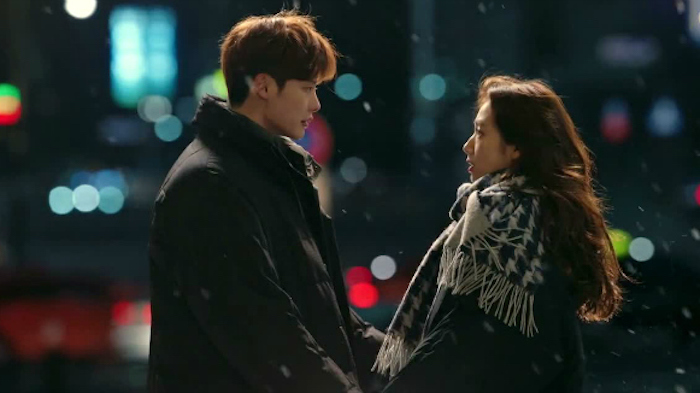
The first connection of K-dramas to seasons is the obvious one: the bulk of live-shoot dramas are usually shot during the season they’re depicting. During the sleepless; grueling weeks of a drama shoot, the cast and crew are completely at the mercy of the season around them. The story they’re working so hard to tell reflects that.
Was it sheer happenstance that a drama like Pinocchio, which was full of winter cold and parka PPL and first snows, was roughly shot and aired from November through January? More likely, the synergy of the drama and the winter season was purposeful. From the sponsorship and advertising that would pay for it, to the production schedule, to the way the plot would make use of the winter weather as prop to create a vivid canvas for the drama — all these moving parts came together in Pinocchio.
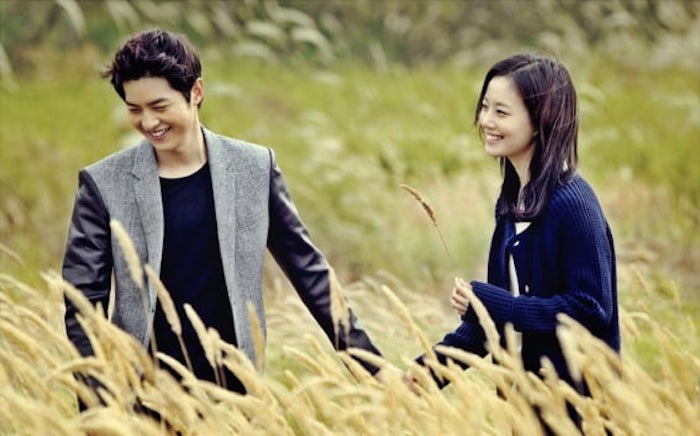
Another connection of story to season is that of mood and genre. Somehow it became pretty standard for a slew of melodramas to appear in the autumn, for summer to be full of romance and rom-coms (current evidence: Her Private Life, The Secret Life of My Secretary, Perfume, My Absolute Boyfriend, Angel’s Last Mission: Love, I could go on for ages), and spring… maybe that’s a good time for a fresh-faced youth drama like My First First Love?
Though dramas certainly don’t always stick to matching their tone to the season they’re in, when they do, it can be a good match. Classic Hallyu dramas like Summer Scent and Autumn Fairytale were even built around the seasons they took place in. But on a smaller and more moderate scale, a revenge melo like Nice Guy was perfectly suited for its September through November airtime with its cold-hearted love affair, earth tone colors, and general feeling of things (seasons, revenge plots, love affairs) coming to a close.
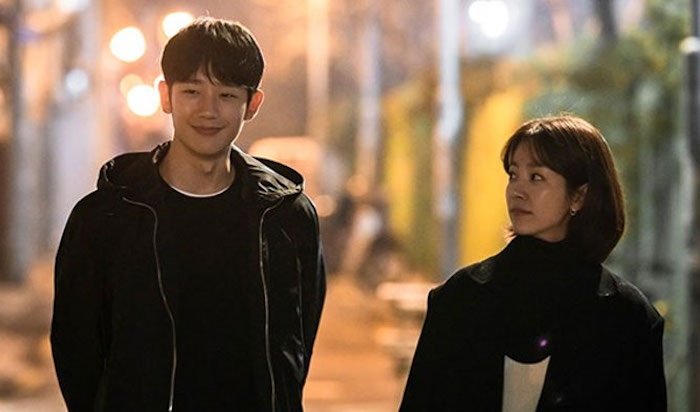
When we talk about seasons matching the audience’s season, of course we’re talking primarily about the seasons in Korea and the domestic audience they’re churned out for. I might live halfway around the world from there, but the seasons I experience are pretty similar to Korea’s (yay, longitude), which goes some way to explain why I experience this synergy between stories and seasons so deeply.
I’m not sure at which point I got so used to the season depicted in a drama matching the season I was experiencing. I don’t think I realized how strong it was until a few pre-produced dramas set in a different season aired. This summer’s One Spring Night (airing May through July) is a good example of a drama that didn’t match its onscreen season. In the drama, the leads are still wearing coats, but the weather in Seoul when it aired was pretty much sunny and very warm. This got me thinking about how much I’m used to experiencing the season with the characters — and how attached to that connection I’ve become.
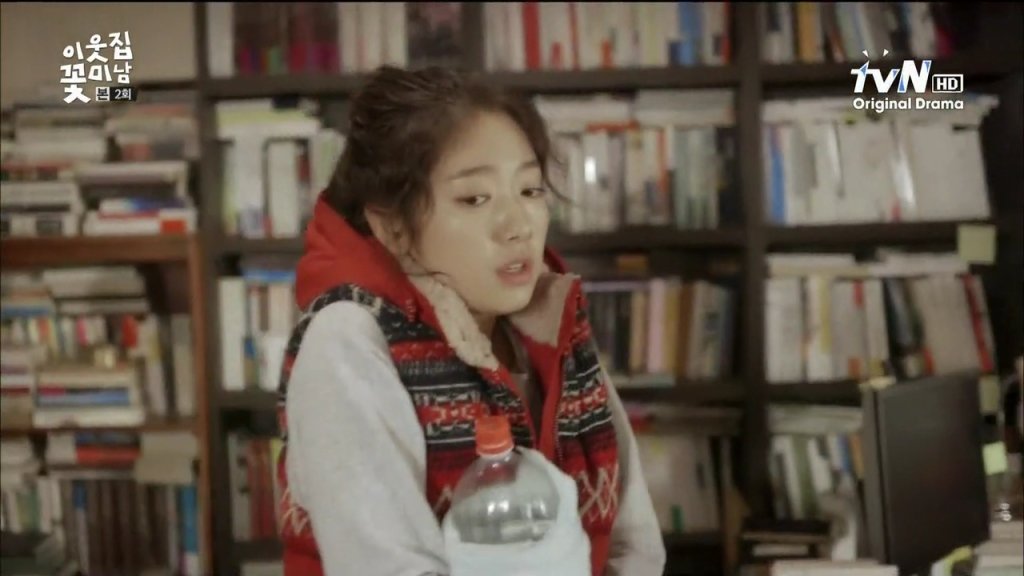
The winter season in dramas often affects me more than others. Maybe that’s because the cold weather is such a sharp contrast to the rest of the year. The other seasons tend to be easy, breezy times of the year where our characters can walk around in their fashion-forward outfits enjoying the flora and fauna. Dramas that take place in winter however, not only have more to contend with while shooting (I always feel for the actors when I can see their breath and red noses in some scenes), but the fact that the characters have to be bundled and booted up impacts the mood of the drama.
One of my favorite examples of this is Flower Boy Next Door, which used its in-season weather to create an even stronger drama. The story of a quirky shut-in heroine saving pennies by wearing three coats inside, sleeping with a hot water bottle, and even just the overall isolated and “winter hibernation” vibes this gave off, added to the depth of the drama’s scene-setting and plot growth.
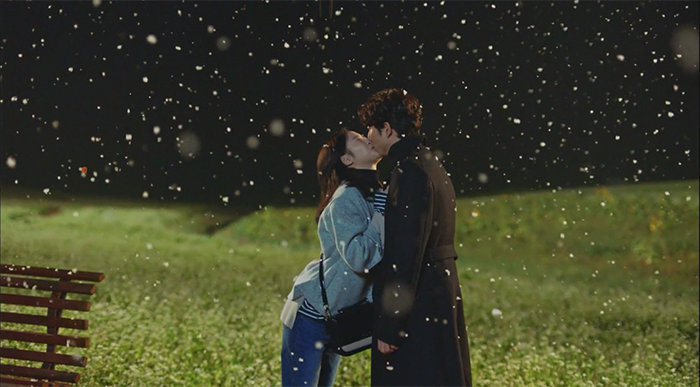
The heroine stretches and grows over the course of the winter and has her figurative “rebirth” in the spring. This element of the story just wouldn’t work the same if the story’s setting was a summer heatwave instead (and how would the panda hat still be a thing!).
Strong use of the season in a drama can build a richer story and setting, but there’s also a nice bit of a vicarious experience in there for the audience as well. If you watched Flower Boy Next Door live, for instance, you froze alongside protagonist Go Dok-mi and her neighbors. It cheered me up to deal with the cold and ice together with the characters in the drama. Even if you watched it off-season, the comparison and contrast of seasons in a drama impact the viewer experience.
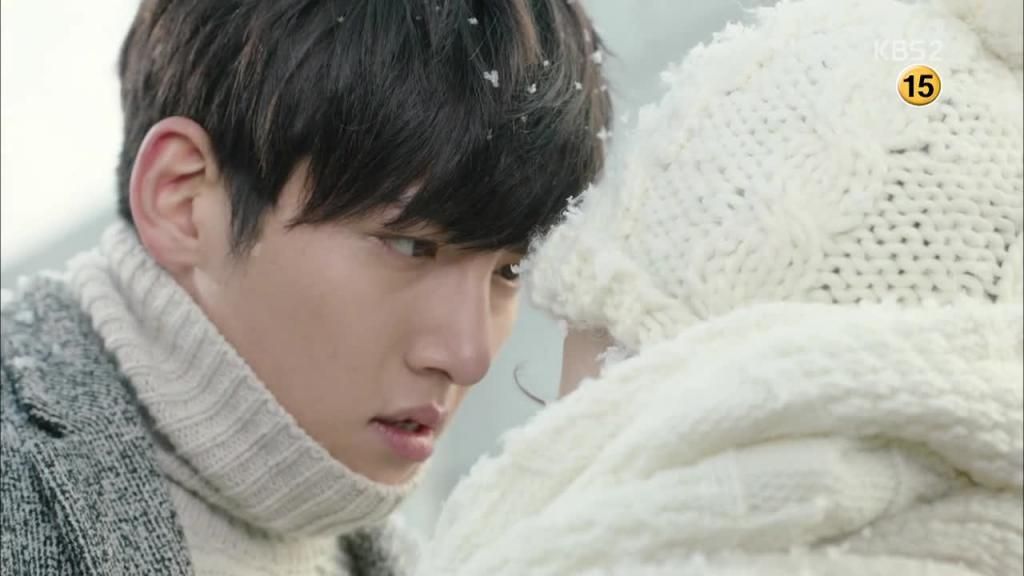
Dramas have never been shy about using as many symbols and metaphors around the four seasons as they are able. In fact, there’s a whole family of tropes to go along with each one (how I love them!). Winter leads the way with the romance and symbolism of the season’s first snow. In Korea, being with your love interest during the first snow signifies that your love for each other will bloom. There’s a nice collection of dramas that have snow-kissed it up to prove it (The Lonely Shining Goblin, Pinocchio, and You From Another Star come first to mind).
For springtime the cherry blossoms rule, and to me, this is the most employed seasonal signifier — I lost count of how many dramas used the beauty of these blossoms in a pivotal romantic scene. Some are more subtle (One Spring Night), while others (That Winter, The Wind Blows and Come Here and Hug Me) have deployed the magical petal drop with no shame whatsoever. The narrow window for these blossoms to be in their full glory makes you realize just how much a shoot schedule must take the weather/seasons into account, or how nimble they are to be able to turn on a dime when reacting to seasonal variables.
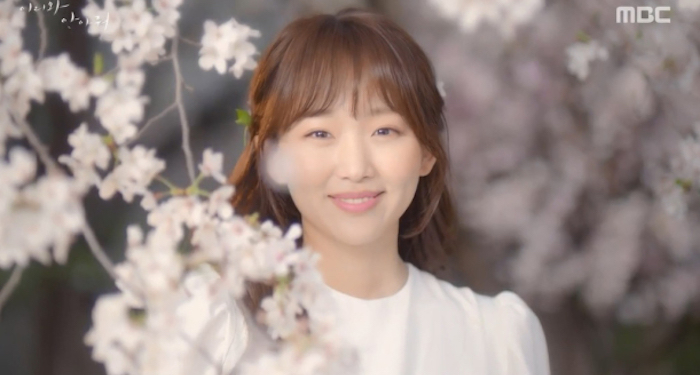
Tropes for summer and fall are a little less used, perhaps — but there are still a lot of caught-in-a-summer-downpour scenes across the drama landscape. These rain scenes usually unite two unsuspecting characters, or draw two characters together, in the sense of both physical space, and emotional connection. Fox rain, umbrella scenes, and downpours in general are so common it’s a wonder we don’t see umbrella PPL.
Lastly, autumn has its own rich mood and color, and dramas know how to use that too. Whether it’s to signal the symbolic end of a relationship, circumstance, or even a life — or just a general wistfulness in the air as a pair walks through some beautiful foliage — autumn weather packs its own sort of dramatic punch.
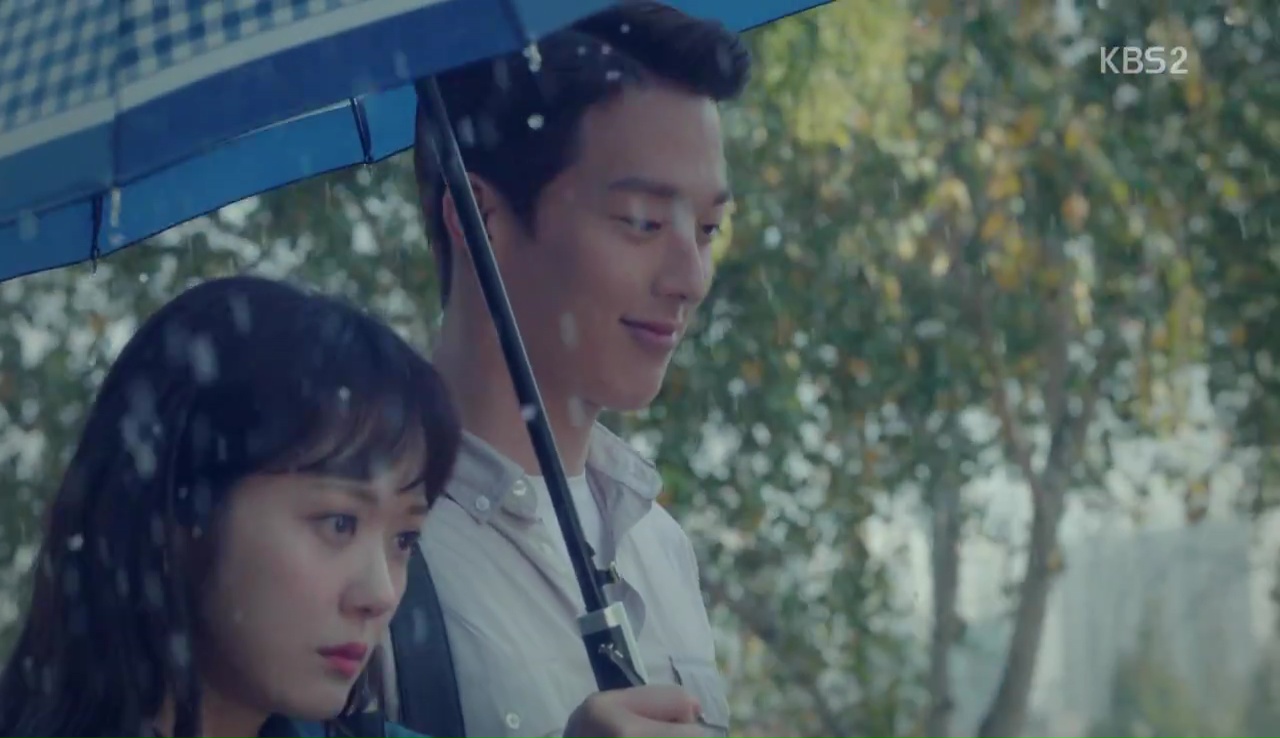
In addition to using the symbolism around the seasons, another way dramas use them is as a mechanism to signal growth and change. Dramas do this a ton, and often flash forward to months or even years later in order to find their conclusions. What better way to do it than the total mood change of a seasonal shift? (It’s better than the token hair color/style change, let’s face it).
Dramas are sometimes so determined to use the seasonal shift in this way that it shows the painful swiftness with which they are shot. In other words, what happens if a drama wants to use a seasonal change, but they’re shooting their springtime story and its summer epilogue in the same week? Dramas fake it with wardrobe changes, which is a surprisingly effective trick — until someone’s breath or red nose gives it all away.

On one hand the use of seasons in dramas can feel trite. Was that snow kiss amongst gently falling snowflakes really essential? Or were we just given a visual treat because it’s cinematic and pretty?
On the other hand, I like to think that the dramas become an integral part of the seasons that they take place in, and vice versa. This has definitely been my experience when I look back on past dramas and try to imagine what they would be like, or how the feel of the drama would change, if the seasons were inverted.
I’ve always been impressed at how dramas can take the same elements and yet keep making shows that feel new, cohesive, and very much their own, time and time again. For some dramas, the seasons have a big part to play in this. They might not dominate all K-dramas, but the seasons and seasonal symbolism are another great example of a storytelling tool that’s used in strategic and purposeful ways.
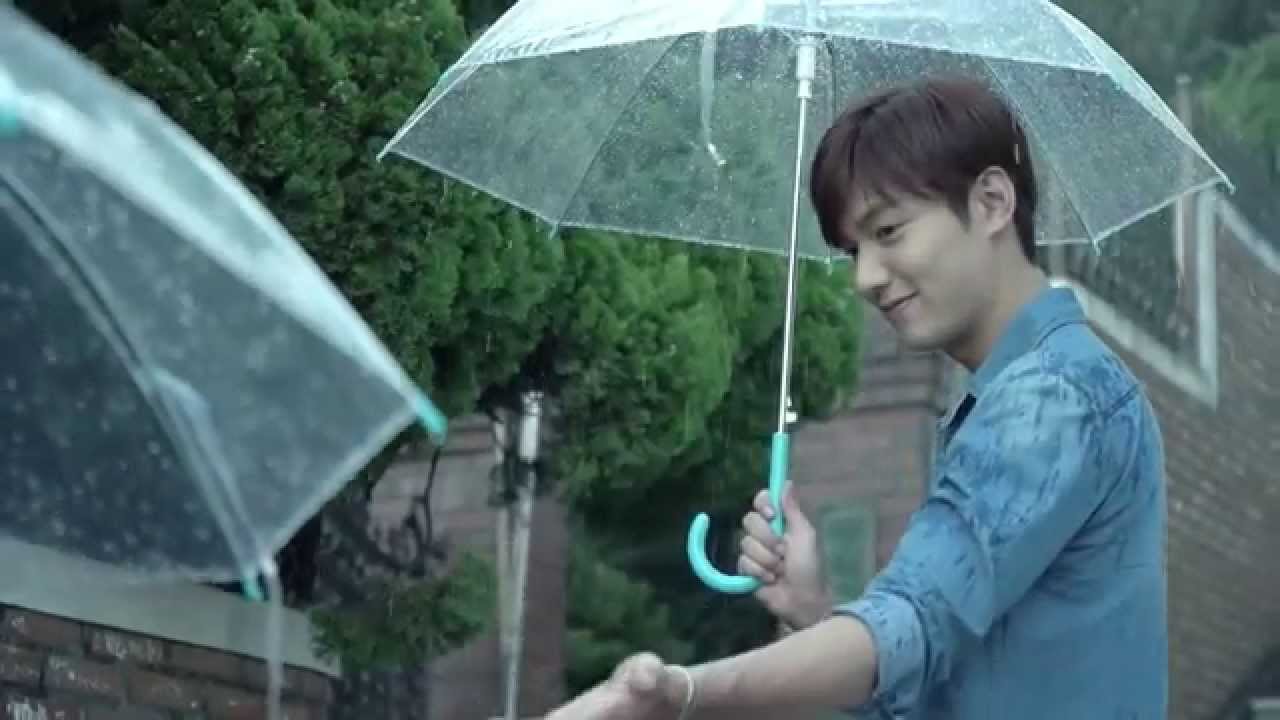
RELATED POSTS
Tags: Come Here and Hug Me, editorial, Flower Boy Next Door, Her Private Life, Pinocchio, The Lonely Shining Goblin
![[Beanie Review] Light Shop](https://d263ao8qih4miy.cloudfront.net/wp-content/uploads/2024/12/LightShop_reviewb.jpg)
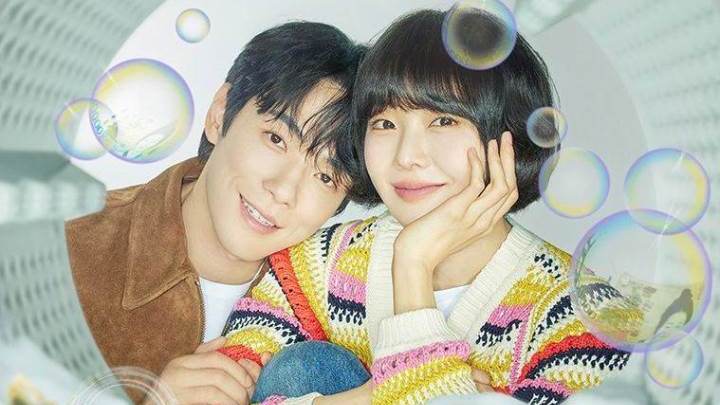







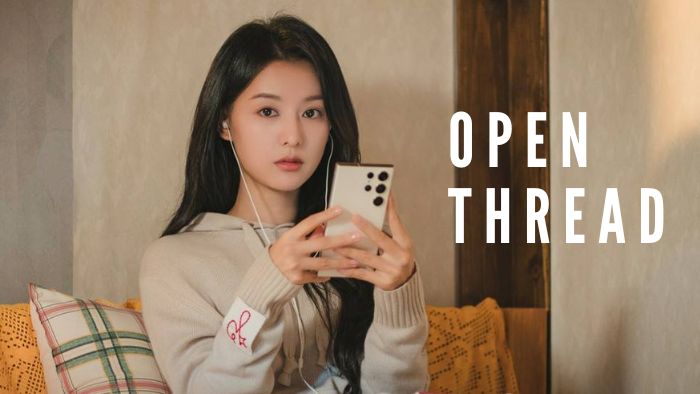
Required fields are marked *
Your email address will not be published. Required fields are marked *
1 liar song #PuppyNotPuppyLeeJaeWookIsBack
July 10, 2019 at 11:11 PM
Thank you for this wonderful write-up, @missvictrix!
When we talk about dramas and seasons, the first few dramas that comes into my mind are Autumn in My Heart, Winter Sonata, Spring Waltz and Scent of Summer where the weather played an important part in the stories of the leads I grew up watching.
A drama where the characters are growing through each season that pass might be rare, but if I am going to pick one, that would be If We Were A Season, a coming-of-age KBS drama special where we see how life and love changes Hae-rim and Gi-seok throughout the seasons that pass as they grow. It was such a gem of a drama special.
Required fields are marked *
happiness
July 10, 2019 at 11:39 PM
If We Were A Season is so underrated, happy to see someone giving it love!
Required fields are marked *
liar song #PuppyNotPuppyLeeJaeWookIsBack
July 11, 2019 at 12:08 AM
It deserves all the love in the world! 💗💓💕💖💞💘
Required fields are marked *
Clare
July 11, 2019 at 12:24 AM
The same writer is doing another drama now called Take of Nokdu!
Required fields are marked *
happiness
July 11, 2019 at 1:37 AM
yess! and i'm so glad to see JDY again, i love him so much
Required fields are marked *
liar song #PuppyNotPuppyLeeJaeWookIsBack
July 11, 2019 at 2:08 AM
Omg! I should check that drama out! I heard so many good things about that drama!
Required fields are marked *
growingbeautifully
July 11, 2019 at 6:12 AM
I just re-watched that web drama. Just so simple and full of feeling. 😍
Required fields are marked *
liar song #PuppyNotPuppyLeeJaeWookIsBack
July 11, 2019 at 6:14 AM
The feels was at peak on the last part
Required fields are marked *
missvictrix
July 11, 2019 at 4:38 PM
I'll have to check this one out!
Required fields are marked *
liar song #PuppyNotPuppyLeeJaeWookIsBack
July 11, 2019 at 5:09 PM
You should! It is on KBS World YouTube channel so it is easy to find!
Required fields are marked *
bbstl 🧹
July 11, 2019 at 8:19 AM
The "season" dramas were so strong in their connections to the time of year. When I think of Summer Scent, I smell the humid air.
Required fields are marked *
liar song #PuppyNotPuppyLeeJaeWookIsBack
July 11, 2019 at 3:11 PM
I get cold whenever I think of Winter Sonata. As for Autumn in my Heart, tears just come out of my eyes when I think of it.
Required fields are marked *
2 Fatcat007 (Kitty 💜)
July 10, 2019 at 11:34 PM
The winter in Flower boy next door really set the mood right!
Also, cherry blossom/first snow fall kiss are my fav 😄
Required fields are marked *
3 SW unnie
July 10, 2019 at 11:44 PM
Another great write-up! Thank you @missvictrix As a (former) literature scientist I always love your analysis about dramas from different point of views!
Luckily the seasons in my country are mostly the same as in Korea and yes, it felt really odd when it was snowing in One Spring Night, since it aired at the beginning of Summer. But for some reason the season in a drama doesn't attract my attention when I'm binge watching an older drama. For example I was watching Flower Boy Next Door at the beginning of summer and I didn't feel the winter season in this drama as much as in Hwayugi, which I was live watching. So I've learned now, I have to be in the same season to fully appreciate how the season affects the story 😊
Required fields are marked *
missvictrix
July 11, 2019 at 4:37 PM
Whoa that sounds like my dream job ^^
Required fields are marked *
4 Nessa (Bebe) 🌹
July 10, 2019 at 11:49 PM
A little feeling of strangeness came over me when I was watching “One Spring Night”, and @missvictrix , you definitely hit the nail on the head— the experience of experiencing the same season the characters are in was definitely missing and MISSED 😔😔
Required fields are marked *
5 sadie
July 11, 2019 at 12:28 AM
I can’t think of a better use of the seasons in recent dramas than in My Ajusshi. It starts right in the heart of winter, supporting the feelings of despair and loneliness. Many of the early scenes were shot in the cold night, a perfect cover for secrets and schemes. But the days get warmer and so does everyone’s heart, and by the time we get to the end, we get a scene shot in such broad daylight that nothing is hidden anymore. Here’s one attempt to chronicle the timeline using seasons as the main clues:
https://givemeslippers.wordpress.com/2018/09/08/my-ajusshi-timeline/
Required fields are marked *
marina
July 11, 2019 at 1:46 AM
O Sadie, I came to write about My Ahjussi and how they used the seasons so perfect to show the journey from darkness and pain to light and ease and how amazing it fit till I saw your comment♥️ thank you for bringing up my dear drama.
We traveled through the winter and the black coats of Park Dong Hoon n Lee Ji An to their light blue and pale pink shirts in the last scene with shining faces under the blue sky of the spring💚💙
Required fields are marked *
6 Kurama
July 11, 2019 at 2:19 AM
One Spring Night was only shifted by two months. In the story, it's the last snow and the start of the spring.
The weirdest drama for season was Uncontrollably Fond. They filmed it in Winter and aired it in Summer.
Required fields are marked *
7 growingbeautifully
July 11, 2019 at 5:00 AM
Lovely article @missvictrix. How well you've curated all the shows for this!
I'm one of those Beanies who only has seasons of wet or dry, with high or low humidity. Therefore every drama with aspects of Spring, Summer, Autumn or Winter, coming up at any time of the year, is just fine where I'm concerned. I can happily go along with any season, and admire the seasonal fashion and the Winter coats that I will hardly ever get to wear. (Actually I do wear 1 short real wool jacket in my freezing cold office).
One show that I distinctly noticed the season in was Spring Waltz. The colours and the clothes became brighter and happier springtime colours as the show progressed and the protagonists fell in love.
Of course Healer's rooftop kiss where Chae Young Shin covers her eyes with her woolly cap would have been impossible if woolly caps were out of season.
The recently completed The Secret Life of My Secretary was a true Summer tale. It could only have worked well in this current Summer time, since it would have been impossible for Gal Hee to wear only a distinctive cardigan over her light wear, in order for Do Min Ik to recognise her, in the winter cold. It would have been hidden under layers of coats. And oh, I love her many summery flowery, frilly and embellished blouses!! [Side note: Any other fans of this show can drop by my fan wall and see the stills I've collage-d on this my 🤩 currently fave OTP 😆 ]
I look forward to your next article @missvictrix!
Required fields are marked *
tsutsuloo
July 12, 2019 at 6:13 AM
The struggle is real. Did you catch the CollegeHumor sketch Why Summer is Women's Winter on YouTube?
Required fields are marked *
growingbeautifully
July 12, 2019 at 7:51 AM
LOLOL! Thanks @tsutsuloo That was so funny but I actually do have in a wool scarf, a cardigan and a woolly jacket in my office. It's just particularly my room that is super cold. But at 5.30pm, the office a/c goes off ... and it gets stuffy!!! Good excuse to not work overtime. 😁
Required fields are marked *
8 13infamyss
July 11, 2019 at 6:52 AM
I remember knetz were complaining about how Suzy and Kim Woo Bin’s drama was airing in the summertime, but since it was prerecorded and filmed in winter, characters in the drama had thick winter coats/jackets on. They were saying how they felt really hot and uncomfortable watching them all bundled up. It came out in the wrong season and that was probably one of the reasons why audience wasn’t in the mood to watch it.
Required fields are marked *
13infamyss
July 11, 2019 at 6:58 AM
My favourite season in the drama has got to be spring - characters can wear light jackets/coats or simply go without it. Another Oh Hae Young, Strong Woman Do Bong Soon, Come and Hug Me come to mind. Besides who wouldn’t love watching sakura flowers breezing through the screen????? They make scenes more aesthetic. I wish it was something I see in real life that on a yearly basis 😌
Required fields are marked *
bbstl 🧹
July 11, 2019 at 8:23 AM
The lushness of the cherry blossoms in Korea always gets me and I'm so grateful for how dramas manage their schedules to take advantage of them.
Required fields are marked *
9 chousaurus
July 11, 2019 at 7:01 AM
i totally agree! i noticed this too when i was watching uncontrollably fond during the summer(?) when it premiered, but since it was pre-produced, all of the characters were wearing winter clothes and something just felt off haha
Required fields are marked *
10 Bob
July 11, 2019 at 7:56 AM
I have only a couple of those monster 50-ish episode 'weekend dramas' under my belt. The difference between 16 episode dramas and 50 become apparent as filming heads deeper and deeper into summer. The clothing becomes light, the sweat on the brow starts to glisten. I noted while watching 'Five Children' that grass was growing profusely between the cracks in the sidewalk at one commonly used exterior location!
Required fields are marked *
11 bbstl 🧹
July 11, 2019 at 8:16 AM
Wonderful essay!
For me this is all about Winter Sonata and the multiple scarves they were swathed in, to the point that the actor's heads were almost swallowed up! The scarves were almost a character in the story, kind of like the coats in Goblin.
Required fields are marked *
12 Snow Flower
July 11, 2019 at 8:58 AM
Thank you for the great essay! I too have noticed the role seasons play in kdrama stories. The transition from winter to spring in My Mister has already been mentioned. The same season (winter into spring) is also part of Thank You. And who can forget the autumnal melancholy of I'm Sorry, I Love You or the summer breeze of My Girlfriend is a Gumiho?
Required fields are marked *
13 javinne
July 11, 2019 at 1:40 PM
What a wonderful article!!! Thank you very much, @missvictrix. I also feel these season aspects are very much embedded within the story and not only for PPL or romantic moments between our OTP.
I like it very much when I can feel the true weather through my live watching dramas because where I live the seasons are the same than in Korea and somewhat I feel closer to them! 😅😅😅
Required fields are marked *
14 SadKDramaLama
July 12, 2019 at 1:15 AM
@missvictrix
When you are only used to wet/dry, the strong 4 seasonal shooting is one of the things that constantly re-enforces K-Drama as foreign.
Of course I appreciate the metaphor and during those winter scenes I can not help but be distracted by the visceral weight of seasons on the cast and crew (Oh, how My Ajusshi must have hurt)....but I am always aware I am looking at someone else's metaphor. Unless it is well done, its as empty as that perennial "white christmas" to the tropics.
Required fields are marked *
15 WishfulToki
July 12, 2019 at 5:14 PM
Thanks for another wonderful essay @missvictrix! FLOWER BOY NEXT DOOR is one of my favourite dramas, and the shivering recluse is a big part of that.
I usually like dramas set in the winter because they get to display their enormous wardrobe and sense of fashion (I did think the enormous winter coats everyone wore in OJAGKYO BROTHERS was a bit too aggressive for PPL, but anyhow). However, I suffer when I see characters suffer from the cold. THE CROWNED CLOWN had the queen walking around in some very thin gowns. I felt really sorry for Lee Se Young.
In this sense I think ARTHDAL CHRONICLES missed an opportunity to tell their story better. The nobles savages at Iark lived in what seems like an endless summer; the leaders at Arthdal walk around in furs as if it's perpetually winter (but we don't see snow) and Taelha wears slip dresses. I don't understand if it's hot or cold anymore.
Required fields are marked *